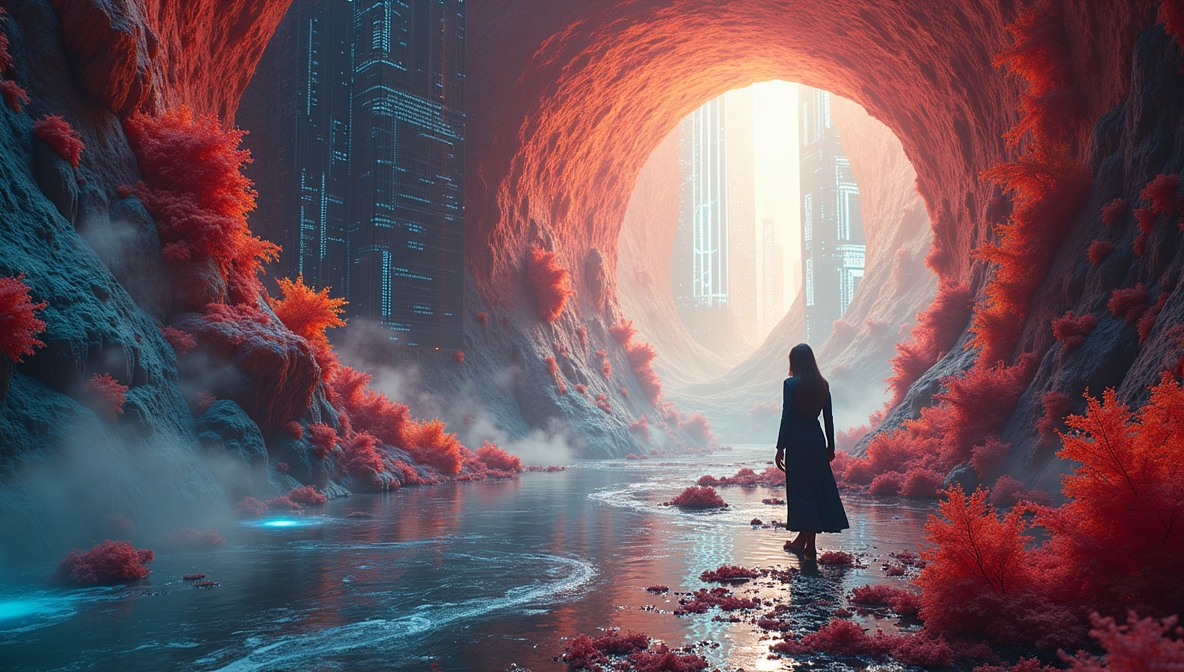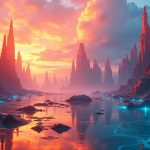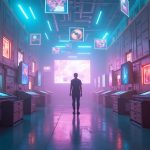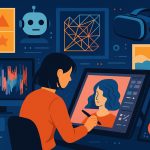Artificial intelligence has reshaped how art is created, pushing the boundaries of human expression. Algorithms generate intricate paintings, compose music, and even craft poetry, but the question lingers—does AI bring genuine artistic innovation, or is it merely an imitation of human creativity?
AI in Art: A New Form of Creativity?
Technology has long played a role in artistic progress. Photography challenged painting. Digital tools changed illustration. AI now enters the scene, producing works that resemble those of seasoned artists. Machine learning models digest vast amounts of data, detect patterns, and generate art that appears fresh yet rooted in prior works.
Some argue that AI lacks intent, a fundamental element of true artistic creation. Others see it as a tool that expands possibilities, much like past technological advancements. The debate intensifies as AI-generated works gain acceptance in galleries, auctions, and public spaces.
How AI Creates Art
AI-generated art relies on algorithms trained to analyze and replicate artistic styles. The process involves several key techniques:
- Generative Adversarial Networks (GANs) – These systems pit two neural networks against each other to refine and enhance generated images.
- Neural Style Transfer – AI applies artistic styles from one image to another, mimicking famous artists’ techniques.
- Text-to-Image Models – Systems like Midjourney and Stable Diffusion convert text prompts into detailed digital artwork.
- Algorithmic Composition – AI in music composition follows learned patterns to create original scores.
These methods replicate artistic techniques but raise questions about authorship and originality.
Imitation or Innovation?
Arguments for Imitation
- Lack of Intent and Emotion – AI processes data but does not experience emotions or intent, which are central to artistic expression.
- Dependence on Existing Works – AI models train on pre-existing art, leading to concerns about originality and plagiarism.
- Absence of Personal Experience – Human artists draw from lived experiences, cultural backgrounds, and emotions, which AI lacks.
Arguments for Innovation
- New Artistic Possibilities – AI enables novel forms of art that human artists might not conceive.
- Collaboration with Artists – Many creators use AI as a tool rather than a replacement, integrating machine-generated elements into their work.
- Accessibility and Efficiency – AI lowers the barrier to artistic creation, allowing more people to engage in visual and musical arts.
The line between imitation and innovation remains thin, with AI functioning both as a creative aid and a potential disruptor.
The Ethical Dilemma: Who Owns AI Art?
The use of AI in art raises legal and ethical concerns. Key issues include:
- Copyright and Intellectual Property – AI-generated works often incorporate elements from existing images and styles. Determining ownership rights remains complex.
- Fair Compensation for Artists – Some AI models are trained on datasets that include works by living artists without permission.
- Authenticity and Artistic Value – The art world struggles to define the value of AI-generated pieces compared to those created by human hands.
Regulations are evolving, but many legal systems remain unclear about AI’s role in artistic authorship.
Notable AI-Generated Artworks
Several AI-generated pieces have gained recognition in recent years:
- “Portrait of Edmond de Belamy” (2018) – Sold at auction for $432,500, this AI-generated painting sparked discussions about machine-created art in the traditional market.
- AI-Generated Music – Systems like OpenAI’s Jukebox create compositions that mimic various musical styles.
- AI in Film and Animation – AI-assisted animation tools generate character movements and enhance visual storytelling.
Each example reinforces AI’s growing influence in the creative field.
AI and Human Artists: A New Relationship
Rather than replacing human artists, AI often serves as a collaborator. Many creatives integrate AI tools into their workflows, using them for:
- Concept Development – Artists use AI to generate visual ideas that they refine manually.
- Efficiency in Production – AI speeds up repetitive tasks, such as color grading or background generation.
- Interactive Experiences – AI-generated art in virtual and augmented reality environments enhances user engagement.
Artists adapt AI to suit their needs, keeping human creativity at the forefront.
The Future of AI in Art
The intersection of AI and art continues to evolve, shaping new creative landscapes. Several trends are emerging:
- Personalized AI Art Tools – Future AI models may allow users to develop custom artistic styles unique to their preferences.
- Hybrid Art Forms – The combination of human and AI-generated elements will lead to new artistic expressions.
- Evolving Legal Frameworks – Laws governing AI-generated art will need to address copyright and ethical concerns more clearly.
AI-generated art remains a subject of both excitement and debate, reflecting broader changes in technology and creativity.
Final Word
AI reshapes artistic expression, but its place in the art world remains unsettled. While it can produce visually stunning works, the absence of human intent raises questions about authenticity. Whether viewed as a tool or a challenge, AI’s presence in art is undeniable, influencing how creativity is defined and practiced.



